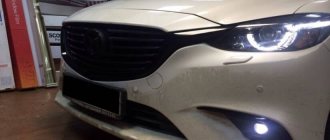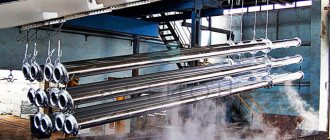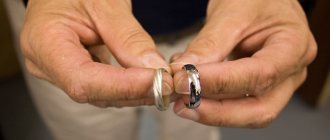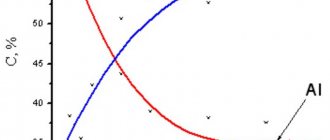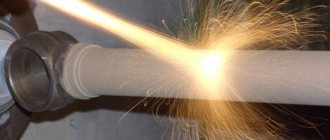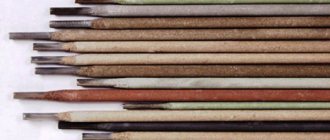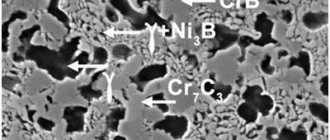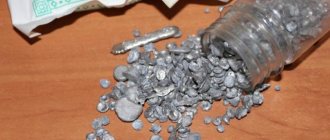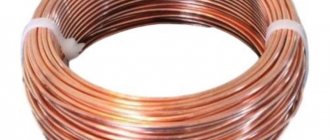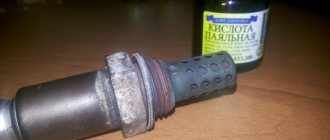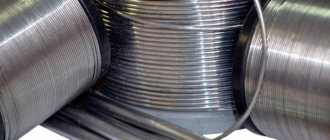DIY liquid tin
Are you here
Today, tin is a common metal. However, in the 16th and 17th centuries, it was quite rare and valuable, so Russia bought it from other countries.
Tin was used to coat iron products to protect them from rust.
From this metal, Russian craftsmen created dishes with relief patterns, since soft, pliable tin could easily be processed with a chisel.
After casting the product, the master decorated it with intricate patterns or an engraved inscription. Today, the Moscow Historical Museum has various examples of tin utensils that have been preserved from ancient times.
Briefly about malleable tin
Metal tin has such a crystal structure that when it is bent, the metal crystals crunch as a result of friction against each other. This crunch is a distinctive feature of pure tin from its alloys, which do not emit sounds when bent.
It is possible to apply various decorative coatings based on tin or any alloy made from it at home.
At the same time, the question may arise, how to make tin yourself? It is extracted using electrochemical etching methods using an electrolyte solution, which you will need to make yourself, using pure tin and its salts.
Craftsmen can obtain tin at home in the following ways:
- Use chemical reactions to produce tin oxide and then melt it in a crucible. As a result, pure tin will be released.
- Obtain tin chloride, and then use electrolysis cans from cans with an electrolyte based on the existing chloride to isolate the tin.
How to get tin chloride at home?
A simpler and cheaper method for producing tin chloride is to use tin-lead solder.
- You need to take concentrated hydrochloric acid, bring it to a boil and dissolve solder in it.
- The next step is to strongly cool the solution, during which lead chloride will precipitate in it.
- The resulting precipitate is filtered with decantation, and an electrolyte (which is practically pure tin chloride with a small amount of impurities) is prepared on the basis of the filtered solution.
- Due to the rapid oxidation of stannous chloride, the resulting solution must be used immediately.
how to make tin chloride at home
How to get pure tin at home?
In order to make an electrolyte, you need to take a small portion of tin chloride as a seed. Later, after isolation, it will be possible to prepare a purer chloride solution.
To do this, you need to take aqua regia or hydrochloric acid and dissolve the metal.
Pour an alkaline solution (9-10%) into a 7% solution of SnCl2 (chloridol), stirring constantly, as a result of which the formation and precipitation of a white precipitate - tin hydroxide - will be observed.
It is necessary to stir the solution until it becomes completely transparent, which will indicate the readiness of the electrolyte.
How to make tin at home? To do this, you will need a fairly large tin can (3-5 liters) and a lid made of dielectric material.
The cans have a tinned inner surface - that is, a layer of tin that protects the iron can itself from oxidation, and the food product contained in it from spoilage.
Therefore, it is possible to extract tin from cans for reuse.
You need to remove the sticker from the jar and remove dirt from it, for which you need to boil it in a strong soda solution for 30 minutes. The following is done:
- A carbon cathode is placed in the center of the jar.
- Connect the anode to the can body.
- Fill the electrolyte and connect the power supply (4V). To do this, you can take several batteries or a battery connected in series.
- To increase the amount of tin produced, cut some old cans into pieces and pour them into the electrolyzer, but you must prevent them from coming into contact with the cathode. One medium-sized tin contains 0.5 g of tin.
- The result of the experiment is the release of spongy tin at the cathode. It must be collected and melted in a crucible into a metal of a characteristic silver color. Why can tin be melted at home? Because it has a melting point of 239˚C, and iron, for comparison, has a melting point of 1538.85˚C.
Alex_EXE
In some radio stores you can see bottles of liquid tin, which is intended for chemical tinning of printed circuit boards. On the Internet there are both positive and negative experiences with its use. One day I saw it on the counter of a local radio store and decided to buy it and try it out.
Liquid tin and its result
I tried it... It would be better not to buy and spoil my experimental board for them. In this article I will briefly tell you what the use of liquid tin leads to.
I bought it from Promelectronics in 2021 and tried it out almost immediately after purchase. I was horrified, filmed it and forgot; I found it now and decided to post it. I do not exclude that I could have bought the wrong solution or used it incorrectly.
Before this, I often came across conflicting reviews of this chemistry on the Internet. It is often mentioned that this chemical only works the first time after purchase, and if it sits for a long time, the result is bad. I can’t say how long this bottle has been collecting dust on the store shelf. But from my own experience, I can have reagents lying around for years, and if they wear out within a month, then they will be of little use. Now I rarely make boards at home and the ferric chloride solution can sit for years, but I use it until I’m blue in the face, in the literal sense of the word.
How the solution was applied. The freshly prepared board was placed on a flat surface and this solution was poured onto it until a large drop formed on the entire surface. The solution reacted with the board for 15-40 minutes, I don’t remember exactly how long. As the solution dried, it was added. Used at room temperature. During the reaction, it was observed that something appeared to be tin on the surface of the copper.
Result. Photos were taken under a microscope.
Liquid tin. Result
Liquid tin. The result is closer
Liquid tin. The result is even closer
It can be seen that a small layer of tin has formed on the tracks. Which is easy to wash. But the board was also covered with something else.
Let's look at other contact pads that have benefited more.
Liquid tin. Contact pads
Liquid tin. Contract sites, closer
On top of a thin layer of tin, the board is overgrown with white crystals.
After using chemicals, the board was soldered disgustingly. After interacting with the soldering iron, the white crystals melted and stained the board with blackness. No photographs were taken of the results of the soldering attempts. The board was hardly tinned with a soldering iron.
For comparison, the board is tinned with liquid tin and a soldering iron.
The board is tinned on top with a soldering iron, and on the bottom with liquid tin.
The result is that I absolutely do not recommend it. It is better to tin with a soldering iron or rose alloy. I do not rule out that the wrong solution could have been used or it was applied incorrectly.
DIY liquid tin video
Tin is one of the chemical elements that has found application in various industrial areas and everyday life. It is a light metal, ductile, malleable and fusible. It has a silvery-white tint and shine. One form of the substance is liquid.
Mainly used in radio construction. Liquid tin is ideal for chemical tinning of copper parts, in particular printed circuit boards.
This treatment method significantly increases their service life and prevents the formation of corrosion.
Details about liquid tin
Liquid tin is a solution that is used to coat printed circuit boards. Thus, the part becomes protected from negative influences. In addition, the surface prepared using this method is completely ready for soldering, because The solder adheres to it much better.
If you are interested in the production and installation of printed circuit boards, excellent specialists in this matter are https://a-contract.ru/produkcija/montazh-pechatnykh-plat/poverkhnostnyi-montazh-pechatnykh-plat/
The advantages of liquid tin are obvious:
Liquid tin can be purchased at any specialized store or made yourself, especially since all components are completely accessible.
Composition and methods of using liquid tin
The chemical is sold in plastic bottles of various sizes. The composition of liquid tin includes: a reducing agent, a stabilizer, deionized water and tin salt.
Tinning is best done immediately before soldering the board. Before the procedure, the part is prepared. It is cleaned and degreased with alcohol. It is not recommended to sand the board, but if necessary, you can sand it with GOI paste and then clean it.
Next, the tinning itself is carried out directly. Tin in a liquid state is shaken well, poured into a prepared plastic container and heated to room temperature in a water bath. The board is immersed in the solution for 20-30 minutes.
The result is a layer of 1 μm. If a thicker layer is needed, the tinning procedure is repeated. After this, the product is washed with running water and wiped dry with a clean cloth.
Before use, the finished board is stored in a stationery file or plastic bag.
Liquid tin is sold in plastic bottles of various sizes
The amount of liquid tin is calculated from the proportion of 1 liter per ½ sq. m. surface. The liquid tin solution can be reused as many times as necessary, until it is exhausted. However, those who have already tested the substance in practice note a decrease in its performance within a couple of months after opening the bottle.
Making liquid tin with your own hands
When making liquid tin at home, you can use both hydrochloric and sulfuric acid. The second is more dangerous, but makes it possible to carry out the tinning procedure at room temperature, because The solution then does not crystallize. Consider a safe recipe using hydrochloric acid.
To prepare a chemical tinning solution, you will need the following components:
The step-by-step process of creating “homemade” liquid tin looks like this.
If the process of preparing liquid tin was carried out correctly, the result should be a transparent liquid with a yellowish tint. Now you can test the resulting tinning solution.
To do this, any board is degreased and immersed in liquid tin for a minute. The copper surface should be coated with a thin layer of a chemical composition.
It is necessary to ensure that the temperature of the solution is not below 50 degrees, otherwise it may begin to crystallize.
Source
How to make tin chloride at home
Tin chloride (SnCl2) is a white powder, a strong reducing agent, a weak oxidizing agent. So, this video shows a method for producing tin chloride at home.
In order to obtain it you will need 1 - laboratory beaker, 2 - a piece of Soviet or modern tin, 3 - pure hydrochloric acid, 4 - electric stove. To begin, place your tin in a bowl, fill it with concentrated hydrochloric acid and place it on the tile.
I don’t recommend adding water, as you will get a weak solution and when it cools, most of your tin will precipitate into white fluffy flakes, so we don’t add water. Next, bring the solution to a gentle boil and boil for 1.5 – 2 hours maximum.
You will notice that your solution will turn black, don’t worry, it’s not dissolved tin, as soon as you remove it from the tile, within five minutes the solution will become transparent. Upon completion, let the solution cool, and then pour it into a glass container for storage along with the dark sediment and white flakes.
These white flakes are nothing more than tin chloride, tin salt SnCl2, and the dark precipitate is undissolved metallic tin, over time it will dissolve in the solution, and only white flakes will remain.
It is important to know that you do not need to make an exact ratio to make tin chloride, just take 200 - 300 milliliters of hydrochloric acid and a piece of tin that will not completely dissolve during the boiling period. Whether your tin is clean or dirty doesn’t matter either, the main thing is that it exists at all.
At the end of the video, I showed the reaction with tin chloride to determine gold in solution. In the presence of gold ions, a purple-brown spot of the adsorption compound of gold and tin acid appears.
Stannic chloride is a very sensitive reagent that can detect the presence of gold in amounts up to 10 parts per billion. Tin chloride also perfectly reduces palladium from a solution of its salt.
The work “Making tin chloride SnCl2” created by the author named Maximov Ro, is published under the terms of the Creative Commons “Attribution” 4.0 International license.Maximov Ro, published under the terms of the Creative Commons “Attribution” 4.0 International license .
Access limited
Access to the requested resource is limited by court decision or for other reasons,
established by the legislation of the Russian Federation
Possible reasons for restricting access
You can check the availability of a domain name and (or) site page index, network address in the Unified Register in the section
“View the Registry” at https://eais.rkn.gov.
You can check the availability of a domain name and (or) site page index, network address in the Registry in the section
“View the Registry” at https://nap.rkn.gov.
You can check the availability of a domain name and (or) site page index, network address in the Registry in the section
“View the register” at https://398-fz.rkn.gov.
You can check the presence of a domain name and (or) site page index in the Registry in the “View Registry” section on
Tin chloride SnCl2 - obtaining How to choose tin Gold test
How and from what to make tin chloride at home with your own hands? Where can I get tin chloride? How to choose tin? In this video, I will first select a suitable solder that has a higher tin content.
Then I will prepare tin chloride by boiling and dissolving tin in hydrochloric acid, then I will test gold-containing solutions with it. Stannic chloride is the most sensitive substance for testing, isolating and identifying gold, palladium and platinum in solution. Hydrochloric acid: https://www..
Liquid tin
Liquid tin +7 Moscow Pyatnitskoe highway, 18 TC "Mitinsky Radio Market" ground floor, pav. 71B from 9:00 to 18:00 Mon – closed
Aqueous solutions for chemical tinning (tin coating).
Aqueous solutions for chemical tinning (tin coating).
Chemical tinning of surfaces creates a pleasant and non-toxic anti-corrosion coating, and is also used as a preliminary process before soft soldering of aluminum and its alloys. Below are the compositions for tinning some metals.
Distilled water is used for chemical tinning and when applying other coatings, but condensate from household refrigerators can also be used. Chemical reagents are suitable at least clean (designation “C” on the label).
We remember that:
- pure nitric acid 1.4 g/cm3 = 0.71 cm3/g
- pure sulfuric acid 1.84 g/cm3 = 0.54 cm3/g
- pure hydrochloric acid 1.19 g/cm3 = 0.84 cm3/g
- pure orthophosphoric acid 1.7 g/cm3 = 0.59 x cm3/g
- pure acetic acid 1.05 g/cm3 =0.95 cm3/g
The process of tinning metals and alloys is as follows.
- The treated part is degreased in one of the aqueous solutions,
- Tinning . Preparation sequence: all chemicals are dissolved in water, always in an enamel container. Then the solution is heated to operating temperature and the parts are hung in the solution. When tinning copper parts and parts made of copper alloys, they are hung on zinc hangers (wires or strips) and small parts are “powdered” with zinc filings. For parts made of aluminum and its alloys, the chemical tinning procedure is described in detail below.
Compositions of solutions for chemical tinning of steel.
| Compositions of solutions for tinning steel | g/l | Solution temperature | Film buildup speed |
| Composition 1: | |||
| Stannous chloride = stannous chloride = stannous chloride = tin dichloride = SnCl2 = tin(II) chloride = stannous chloride = food additive E 512 (fused = melted and crushed, e.g. in a mortar) | 1 | In a boiling solution | 5-8 µm/h |
| Aluminum-ammonium sulfate = aluminum-ammonium alum = aluminum-ammonium sulfate = auminium ammonium aulphate = aluminum-ammonium alum = AlH4NO8S2 = food additive E523 | 15 | ||
| Composition 2: | |||
| Stannous chloride = stannous chloride = stannous chloride = tin dichloride = SnCl2 = tin(II) chloride = stannous chloride = food additive E 512 | 10 | In a boiling solution | 5 µm/h |
| Aluminum-ammonium sulfate = aluminum-ammonium alum = aluminum-ammonium sulfate = auminium ammonium aulphate = aluminum-ammonium alum = AlH4NO8S2 = food additive E523 | 300 | ||
| Composition 3: | |||
| Stannous chloride = stannous chloride = stannous chloride = tin dichloride = SnCl2 = tin(II) chloride = stannous chloride = food additive E 512 | 20 | 80°С | 3-5 µm/h |
| Rochelle salt crystalline hydrate = double sodium-potassium tartaric acid tetrahydrate = NaKC4H4O6 4H2O = sodium potassium tartrate = sodium potassium tartrate | 10 | ||
| Composition 4: | |||
| Stannous chloride = stannous chloride = stannous chloride = tin dichloride = SnCl2 = tin(II) chloride = stannous chloride = food additive E 512 | 3-4 | 90-100°С | 4-7 µm/h |
| Rochelle salt crystalline hydrate = double sodium-potassium tartaric acid tetrahydrate = NaKC4H4O6 4H2O = sodium potassium tartrate = sodium potassium tartrate | until saturation | ||
Compositions of solutions for chemical tinning of copper and alloys.
When tinning copper parts and parts made of copper alloys, they are hung on zinc hangers (wires or strips) and small parts are “powdered” with zinc filings.
| Compositions of solutions for tinning copper and alloys | g/l | Solution temperature | Film buildup speed |
| Composition 1: | |||
| Stannous chloride = stannous chloride = stannous chloride = tin dichloride = SnCl2 = tin(II) chloride = stannous chloride = food additive E 512 | 1 | In a boiling solution | 10 µm/h |
| Potassium bitartrate = potassium tartrate (sometimes tartrate) = KC4H5O6 = food additive E336ii | 10 | ||
| Composition 2: | |||
| Stannous chloride = stannous chloride = stannous chloride = tin dichloride = SnCl2 = tin(II) chloride = stannous chloride = food additive E 512 | 20 | 20°C | 10 µm/h |
| Sodium lactate = sodium lactic acid = Sodium lactate = Sodium DL-lactate = Lactic acid sodium salt = C3H5NaO3 = food additive E325 | 200 | ||
| Composition 3: | |||
| Stannous chloride = stannous chloride = stannous chloride = tin dichloride = SnCl2 = tin(II) chloride = stannous chloride = food additive E 512 | 8 | 20°C | 15 µm/h |
| Thiourea = thiocarbonic acid diamide = thiourea = thiourea = thiocarbamide = sulfourea = CS(NH2)2 | 40-45 | ||
| Sulfuric acid | 30-40 | ||
| Composition 4: | |||
| Stannous chloride = stannous chloride = stannous chloride = tin dichloride = SnCl2 = tin(II) chloride = stannous chloride = food additive E 512 | 8-20 | 50-100°С | 8 µm/h. |
| Thiourea = thiocarbonic acid diamide = thiourea = thiourea = thiocarbamide = sulfourea = CS(NH2)2 | 80-90 | ||
| Hydrochloric acid | 6,5-7,5 | ||
| Sodium chloride = NaCl = table salt | 70-80 | ||
| Composition 5: | |||
| Stannous chloride = stannous chloride = stannous chloride = tin dichloride = SnCl2 = tin(II) chloride = stannous chloride = food additive E 512 | 5,5 | 60-70°С | 5-7 µm/h |
| Thiourea = thiocarbonic acid diamide = thiourea = thiourea = thiocarbamide = sulfourea = CS(NH2)2 | 50 | ||
| Tartaric acid = dihydroxysuccinic acid = 2,3-dihydroxybutanedioic acid = HOOC-CH(OH)-CH(OH)-COOH = food additive E334 | 35 | ||
Compositions of solutions for chemical tinning of aluminum and aluminum alloys. For these materials there is a special procedure:
- We degrease the parts in acetone or B-70 gasoline (or “gasoline for lighters”), theoretically it exists in nature, in practice - thanks to the efforts of effective managers, it is inaccessible, therefore - any other gasoline
- For 5 minutes, immerse the parts in a 70°C solution of:
- Soda ash = sodium carbonate = sodium carbonate. Chemical formula, Na2CO3 in the amount of 56g/l
- Sodium hypophosphite = sodium hypophosphite = sodium hypophosphite 1-water = sodium hypophosphite monohydrate = sodium hypophosphite = NaPH2O2*H2O in the amount of 56 g/l
- Place the parts in a 50% nitric acid solution for 30 seconds.
- Rinse thoroughly under running water and immediately place in one of the solutions described below.
| Compositions of solutions for tinning aluminum and aluminum alloys | g/l | Solution temperature | Film buildup speed |
| Composition 1: | |||
| Sodium stannate = sodium stannate = Sodium Stannate = Na2SnO3 | 30 | 50-60°С | 4 µm/h |
| Sodium hydroxide = caustic soda = caustic soda = caustic soda = caustic alkali. Chemical formula of NaOH | 20 | ||
| Composition 2: | |||
| Sodium stannate = sodium stannate = Sodium Stannate = Na2SnO3 | 20-80 | 20-40°С | 5 µm/h |
| Potassium pyrophosphate = potassium pyrophosphate = potassium phosphate pyro = potassium diphosphate = tetrapotassium salt of pyrophosphoric acid = tetrapotassium pyrophosphate = potassium diphosphate = potassium pyrophospate = potassium pyrophosphate = pyrophosphatedepotassium = tetrapotassiumdiphosphorate = pyrophosphatetetrapotassique = tetrapotassium pyrophosphate = K4P2 O7 | 30- 120 | ||
| Sodium hydroxide = caustic soda = caustic soda = caustic soda = caustic alkali. Chemical formula of NaOH | 1,5-1,7 | ||
| Ammonium oxalate, ammonium oxalate = ammonium oxalicum = ammonium oxalate = ammoniumoxalat = (NH4)2C2O4 | 10-20 | ||
Everything you need to know about liquid tin, making your own solution
Tin is one of the chemical elements that has found application in various industrial areas and everyday life. It is a light metal, ductile, malleable and fusible. It has a silvery-white tint and shine. One form of the substance is liquid.
Mainly used in radio construction. Liquid tin is ideal for chemical tinning of copper parts, in particular printed circuit boards.
This treatment method significantly increases their service life and prevents the formation of corrosion.
Do-it-yourself liquid tin – Metalist's Handbook
Tin chloride (SnCl2) is a white powder, a strong reducing agent, a weak oxidizing agent. So, this video shows a method for producing tin chloride at home.
In order to obtain it you will need 1 - laboratory beaker, 2 - a piece of Soviet or modern tin, 3 - pure hydrochloric acid, 4 - electric stove. To begin, place your tin in a bowl, fill it with concentrated hydrochloric acid and place it on the tile.
I don’t recommend adding water, as you will get a weak solution and when it cools, most of your tin will precipitate into white fluffy flakes, so we don’t add water. Next, bring the solution to a gentle boil and boil for 1.5 – 2 hours maximum.
You will notice that your solution will turn black, don’t worry, it’s not dissolved tin, as soon as you remove it from the tile, within five minutes the solution will become transparent. Upon completion, let the solution cool, and then pour it into a glass container for storage along with the dark sediment and white flakes.
These white flakes are nothing more than tin chloride, tin salt SnCl2, and the dark precipitate is undissolved metallic tin, over time it will dissolve in the solution, and only white flakes will remain.
It is important to know that you do not need to make an exact ratio to make tin chloride, just take 200 - 300 milliliters of hydrochloric acid and a piece of tin that will not completely dissolve during the boiling period. Whether your tin is clean or dirty doesn’t matter either, the main thing is that it exists at all.
At the end of the video, I showed the reaction with tin chloride to determine gold in solution. In the presence of gold ions, a purple-brown spot of the adsorption compound of gold and tin acid appears.
Stannic chloride is a very sensitive reagent that can detect the presence of gold in amounts up to 10 parts per billion. Tin chloride also perfectly reduces palladium from a solution of its salt.
The work “Making tin chloride SnCl2” created by the author named Maximov Ro, is published under the terms of the Creative Commons “Attribution” 4.0 International license.Maximov Ro, published under the terms of the Creative Commons “Attribution” 4.0 International license .
The Tale of the Alloy Rose and the Fallen Krenka
A long, long time ago, when I was a schoolboy and was extracting radio components mainly from various boards thrown into a landfill, I noticed an unusual phenomenon in the process of soldering another such board: some solders instantly fell off the foil as soon as I poked them with a soldering iron. The pad remained clear of solder, smooth and silver-tinted, and the drop of solder on the part's lead had the same shiny, flat base at the bottom. I noticed and forgot for the time being.
And the year before last, while taking part in a scientific expedition to the Arctic, I unexpectedly encountered an unexpected failure of the device I was working with.
The device was homemade - other people made it, but fortunately, they provided me with a circuit diagram and all the documentation; I took a soldering iron and the necessary equipment with me, just in case.
It didn’t take long to find the fault: inside the case there was an integrated 5 V stabilizer in a D-Pak case, which simply fell off the board.
Liquid Tin Recipe
This recipe for liquid tin is based on the solution, the preparation of which was discussed in this
article and differs from the previous chemical tinning solution, with a slightly modified recipe and the replacement of hydrochloric acid with sulfuric acid.
The advantage of this solution is that it can be tinned at room temperature; the solution of liquid tin does not crystallize.
The only drawback is the presence of sulfuric acid, which leaves holes in your pants if not used carefully.
Preparation of chemical tinning solution
Recipe for liquid tin solution:
1. SnCl2*2H2O - 16 g. 2. Battery electrolyte - 130 ml. 3. Thiourea - 75 g. 4. Sodium hypophosphite - 20 .. 40 g. 5. Complex of bismuth salt with iodine - 2 ml. 6. Surfactant - 2..5 ml (Fairy product) 7. Distilled water - up to 1 liter.
The procedure for preparing a solution of liquid tin.
1. Weigh 16 grams of stannous chloride and dissolve it in 130 ml. battery electrolyte with a density of 1.27.
2. Dissolve a sample of 75 grams of thiourea in 450 ml. hot (90..95 degrees) water. Then mix it with a solution of tin chloride.
3. Weigh 40 grams of sodium hypophosphite and dissolve in 300 ml. hot (90..95 degrees) water and mix with the rest of the solution.
4. Take 1 gram of caustic potassium and pour 25 ml into it. pharmaceutical iodine and mix well
The iodine has become discolored, a precipitate has fallen to the bottom of the solution, filter it, it (the precipitate) is not needed.
5. Dissolve 0.1 grams of Rose alloy in 2 ml of nitric acid, filter the liquid (no precipitate is needed) and combine with iodine solution. As a result, we obtain a yellow solution with a precipitate.
6. Shake this yellow solution and take 2 ml. together with the sediment and pour it into the main solution. Test without D6B and D6Bi additives. You can see some white streaks on the board.
7. Add the surfactant to the solution and mix well. In this case, tin electroplating additives D6B and D6Bi were used. You can add any available surfactant (for example, Fairy detergent), it doesn’t matter. Test solution with surfactant. The board was covered with an even layer of chemical tin.
Read articles on the original site, do not support thieves.
Testing of liquid tin for chemical tinning
Photo for comparison, on the left with surfactants, on the right without surfactants. Also a finished board, with chemically applied tin from this solution.
Video of the operation of a liquid tin solution.
Conclusion
I would like to add that it is not necessary to add the bismuth-iodine complex to the liquid tin solution; it only affects the preservation of solderability after long-term storage of the board after chemical tinning.
Happy boarding everyone.
Article written by: Admin Whoby.Ru
If you liked the article, click on the button of the desired social network located below. With this action you will add an announcement of the article to your page. This will greatly help in the development of the site.
More posts on the topic
Good day.
In point 3, the photograph on the jar says “calcium hypophosphite,” and the recipe says “sodium hypophosphite.” Is this a possible replacement?? Which is better to use? Or what is more correct? Thank you in advance.
What is needed is sodium hypophosphite and nothing else, that is what needs to be used. Don't pay attention to the photo.
Everything is almost wonderful. The solution works. The board turned white instantly. I'll wait an hour and see how much tin builds up. Although there is a small BUT. It is not possible to complete steps 4 and 5, as in the pictures. Or rather, point 4 passes. The iodine becomes discolored. I move on to 5. I dissolve 0.1 g. Rose alloy in concentrated nitrogen (70+) 2 ml. To speed it up I warm it up a little. After dissolving, I throw away the precipitate and use the liquid. So, after adding this straw liquid to the decolorized iodine, it again acquires the color of iodine and no precipitate forms. The solution is transparent. That is, the bismuth-iodine complex was prepared incorrectly. It is difficult to quickly obtain bismuth nitrate here. Tell me where I went wrong.
In step 5, try adding a little KOH to the solution of the wrong iodine.
It seems to have worked out. Although not like in the photo. When KOH flakes were added, at some time the solution abruptly became straw-yellow with a white precipitate (as with the initial addition of KOH to iodine). Is this how it should be? I suspect that the acid of bismuth nitrate has been neutralized.
After an hour of keeping the test board in the solution, a rather thick layer of tin settled on the copper. The copper on the test board is 18 microns. The layer of chemical tin feels no thinner (an optical illusion). It solders wonderfully, even with the wrong bismuth-iodine complex. Thanks for the recipe. I have a question about chemical copper. I'll ask there.
What if at the end of stage 2 almost the entire solution has crystallized?
The water should be hot.
Tin chloride at home. How to make tin chloride
When tinning, tin or alloys based on it are used.
Tin coating is used for:
- application to brass parts that are subject to soldering;
- protection of surfaces of steel products during nitriding;
- separating metal products by applying a layer of tin when mating copper surfaces with steel or aluminum in order to equalize the electrode potentials;
- To protect against the effects of sulfur contained in the rubber insulating layer, it is necessary to tin the cable;
- applying a corrosion-resistant coating to tin, which is used for the manufacture of canning containers;
- protection of various metal products from rust.
Tin-lead coating (PLC) is used in the following cases:
- preparing radio components for soldering and protecting them from corrosion;
- Tinning wires to improve solderability.
The recommended thickness of the poluda layer is given in the table.
| Purpose | Thickness, microns |
| Protection of steel parts: | |
| from corrosion | 21-24 |
| during nitriding | 9-12 |
| when gumming | 12-15 |
| Improved solderability: | |
| spring parts | 3-9 |
| steel parts | 6-15 |
| parts made of copper and copper alloys | 3-9 |
| parts made of aluminum and its alloys | 6-15 |
How to prepare an electrolyte for tin extraction?
To prepare the electrolyte, take a small portion of tin chloride, so to speak, as a seed. Subsequently, after isolation, it will be possible to prepare a purer solution of chloride by dissolving the metal in hydrochloric acid or aqua regia.
A 9-10% alkali solution is carefully poured into a 7% solution of tin chloride while stirring. At the beginning of the reaction, when mixed, a white precipitate forms and falls out - this is tin hydroxide, which will dissolve in excess alkali and thus form an alkali metal stannite.
Stirring continues until the liquid becomes clear, which means the electrolyte is ready.
Tinning methods
Tinning technology is implemented by melting solder, wetting the surface with solder and its further crystallization on the surface.
According to GOST 17325-79, solder should be understood as a material with a lower melting point compared to the material from which the part is made. Tinning of copper, aluminum and steel is carried out with tin.
For reference, the table shows the melting points of these metals.
| Metal | Melting point, degrees Celsius |
| Tin | 232 |
| Aluminum | 660 |
| Copper | 1085 |
| Steel | 1300-1500 |
There are two types of tinning:
- Galvanic. This method is used to tin products of various shapes and sizes under production conditions. If you have special equipment, you can tin radio and electrical parts at home. Galvanic tinning is performed in an electrolyte:
- sour.
- Hot. The most ancient method of applying poluda. It is used for large parts of simple shape or wires and cables in preparation for soldering. Types of hot tinning:
- tinning by rubbing;
- tinning by immersion method.
Download GOST 17325-79
Galvanic technology
The process is based on the use of electric current and the occurrence of electrochemical reactions. Tinning occurs by immersing parts in a bath of alkaline or acidic electrolyte.
The main advantages of galvanic application of poluda:
- ensuring strong adhesion of the floor to the metal surface;
- uniformity of the applied layer;
- the ability to control the thickness of the coating, including on products of complex shape;
- obtaining a layer with low porosity;
- economical use of half and solder.
The main disadvantage is the high cost due to the consumption of electrical current. This process requires special equipment and highly qualified performers.
Tinning using an electrolyte is associated with the complexity of preparing the solution.
During the process, constant monitoring of the concentration of alkali or acid in the electrolyte, as well as the condition of the anodes and the surface of the bath, must be carried out.
When performing certain works in radio and electrical engineering, it becomes necessary to tin the copper surfaces of the boards before soldering. The simplest method is chemical tinning.
This is galvanic technology. Its essence lies in the fact that during the electrochemical reaction, copper ions on the surface are replaced by tin ions from a tin-containing solution.
To carry out such tinning at home, you will need a soldering bath for tinning (tinker). The baths are affordable, compact (about 80 mm in diameter, 35-40 mm deep), with a power of 150-300 W.
They can be used to prepare copper circuit boards for soldering by immersing them in solder, for applying semi-solder to electronic components, and for dismantling radio-electronic elements.
Solution for galvanic treatment
Two types of electrolytes are used for tinning:
- acidic, contain tin in the form of Sn2+;
- alkaline, tin is contained in the form of the SnO8 2- anion.
Due to the fact that tin has different valence in these electrolytes, its deposition rates differ. In an alkaline electrolyte, tin is deposited twice as slowly as in an acidic one.
Of the acidic electrolytes, the most widespread are:
Chemical tinning of a printed circuit board at home
Every radio amateur, geek, engineer periodically makes printed circuit boards at home for their crafts, electronic devices and prototypes. After etching the printed circuit board, the question probably arose about tinning the tracks, contact pads and polygons. Tinning of copper conductors is primarily necessary to prevent oxidation of the copper coating of the printed circuit board, ease of soldering of radio elements, strengthening of conductors and, of course, for aesthetic appearance.
To tin my home-made printed circuit boards, I never paid much attention to the aesthetic appearance and tinned the tracks with a soldering iron, using alcohol-rosin flux, and ordinary tin wire with solder. The disadvantages were obvious:
- long tinning time
- uneven solder coating
- the need to wash with isopropyl alcohol or alcohol-gasoline to remove flux and solder residues
- absolutely not aesthetically pleasing
The photo below shows an example of such tinning on a printed circuit board (these are devices for monitoring the operation of a well pump in a country house, wired to make chickens laugh; in some places I had to make slits later with a cutter, I did it in a hurry. That’s why I give it as an example =)):
Uneven coating of copper conductors with solder is visible. Such a board also has to be washed with a brush, or an ultrasonic bath is used. I will give another example of such a printed circuit board (IR - remote control for 4 commands):
In general, all the ways to solve these problems led me to the famous Rose alloy. After reading about this alloy, I quickly ran to the local radio market and purchased a couple of bags of granules. Upon arrival home, I put a bottle of water on the gas stove and brought it to a boil, after which I took the printed circuit board, walked it with sandpaper, degreased it and threw it into a tin can with water and Rose alloy. It’s not for nothing that they say: “The first pancake is lumpy.” All my alloy tinned not so much the printed circuit board, but rather the very bottom of the bottle. I tried it a second time, and somehow it didn’t work for me again.
As a result, without hesitation, I switched to my classic technology. In principle, at home I made boards mainly for prototypes; for finished products, I still prefer to order them from production. Years passed and I did not change the old proven method until I got tired of it all. And I again decided to look for an alternative to the old-fashioned method and found it! As always, by chance, when I went into the Chip and Dip store to buy some small things, I came across a bottle on the shelf with the inscription “Liquid Tin”. I decided to take it and try it. I was just making one project for myself - a headphone amplifier (as soon as I assemble it, I’ll definitely write a post about it). The effect was beyond praise.
Stages:
- sanding the prepared printed circuit board
- degrease
- Place in a suitable plastic/glass container
- fill the surface with liquid tin (working temperature from 20 degrees)
After an hour, the output is a beautiful, uniform tin coating on the printed conductors (you can, of course, tin for longer to get more tin deposition on the copper conductors).
The process was filmed:
I'll attach a couple more photos of the process:
Preparation for chemical tinning of the second printed circuit board.
Assembling the device on a finished printed circuit board.
I have already tried this technology on three boards, and I was pleased with the result. The price of such a bottle in Chip and Dip is 220 rubles. One problem is that there are no instructions as such. I don’t yet know how long the solution lasts. Is it possible to pour the used solution back into a common container or does it need to be disposed of? Is catalysis possible with an increase in operating temperature, etc... The chemical industry does not stand still and makes our work easier. Thanks to the chemists for this! Original article
How to mine tin at home?
› Other
articles
Tin is a silvery metal characterized by softness and ductility. Since its melting point is relatively low, only 232 °C, tin is considered a low-melting metal. A stick made of pure tin produces a characteristic crunching sound when bent.
This is due to its crystalline structure. When deformed, friction occurs between the metal crystals, and this is the cause of the crunch. This is the distinguishing feature of pure tin from an alloy.
Getting tin at home
Today, tin in its pure form is quite rare. Even solder for a soldering iron has impurities. But inquiring minds constantly ask the question: “Where can I get pure tin?”
You can get it quite simply, right in your kitchen, from an ordinary tin can. The trick is that such jars are tinned on the inside, that is, covered with a thin layer of tin.
This is done to protect the metal from corrosion. To extract tin we need:
- tin,
- washing soda,
- several batteries (so that the total voltage is 9-12 Volts),
- alkali solution (its preparation will be described below).
The jar needs to be thoroughly cleaned first. To do this, pour a concentrated solution of washing soda into it and boil for 30 minutes. Next, you need to rinse it several times with water. The batteries need to be connected in series or you can use a car battery.
The positive contact connects directly to the can. Negative - with a carbon rod, which can be obtained from the same battery. He is inside her. Carefully lower the rod into the jar of solution. The main thing is that he does not touch her walls. After some time, spongy tin will begin to collect on the negative contact.
This will be accompanied by bubbles in the electrolyte. After completing the procedure, you need to take out the tin-coated rod, put it in a clean metal jar and put it on fire. The tin will be fused into an ingot.
Preparation of lye
It's very easy to make. To do this, you need to mix washing soda with slaked lime and boil the solution. As a result, caustic soda (alkali) is formed, and chalk will precipitate. After cooling and filtering, only an alkaline solution will remain.
Today, tin is a common metal. However, in the 16th and 17th centuries it was quite rare and valuable, so Russia bought it from other countries. Tin was used to coat iron products to protect them from rust.
From this metal, Russian craftsmen created dishes with relief patterns, since soft, pliable tin could easily be processed with a chisel. After casting the product, the craftsman decorated it with intricate patterns or an engraved inscription.
Today, the Moscow Historical Museum has various examples of tin utensils that have been preserved from ancient times.
Tin casting at home
Today, making small figurines and products from tin at home is not only interesting, but also quite profitable.
After all, many collectors are willing to pay a lot of money for a tin soldier, a model of military equipment, or just a souvenir.
Amateur artists who want to learn how to cast parts usually use tin for this, since it has the following positive qualities:
- Attractive beautiful color similar to silver.
- Tin is technologically advanced and has a low melting point.
- Plastic, easy to engrave and mint, “molded” with a soldering iron.
A skilled craftsman, using simple equipment, is able to turn a small silver ingot into a beautiful sculpture, lantern, candlestick, casket, medal, brooch, bracelet, cufflink and much more.
In addition, openwork and relief plates are created from tin to decorate boxes, decorate door hinges, handles, and keyholes.
How is tin casting done at home? This process consists of the following stages and features:
- The production of future products begins with the creation of color sketches on a sheet of paper.
- Then polymer clay is taken and a figurine is prepared from it to create a mold. In this case, every smallest detail is applied with a stack and a thin awl.
- Making the mold is the most critical stage. It must have the perfect connector. This is necessary for easy and safe removal of the casting. As a rule, casting molds are made collapsible, consisting of 2 parts.
- The most optimal material for the mold is plaster or silicone, but in order to make a silicone mold, you need to spend much more material and time.
- In addition, stores sell special sealants that are poured onto models, they harden and thus become reusable molds for pouring.
Where to get tin for soldering - Metalworker's Guide
Tin (lat. Stannum; denoted by the symbol Sn) is a ductile (crunches when deformed at a fracture), malleable and fusible shiny metal of a silvery-white color, sometimes has a yellow tint.
Tin forms two allotropic modifications: below 13.2 °C, stable α-tin (gray tin) with a cubic diamond-type lattice; above 13.2 °C, stable β-tin (white tin) with a tetragonal crystal lattice. Tin is used as a safe, non-toxic, corrosion-resistant coating in its pure form or in alloys with other metals.
The main industrial uses of tin are in tinplate (tinned iron) for food containers, in solders for electronics, in household piping, in bearing alloys, and in coatings of tin and its alloys. The most important alloy of tin is bronze (with copper). Another well-known alloy, pewter, is used to make tableware.
About 33% of all mined tin is consumed for these purposes. Up to 60% of tin produced is used in the form of tin alloys with copper, copper and zinc, copper and antimony (bearing alloy, or babbitt), with zinc (packaging foil) and in the form of tin-lead and tin-zinc solders.
Many collection points are ready to buy tin, but only our company can offer a favorable and fair price in accordance with the current state of the metal market.
The world demand for tin, the price of which is quite high, and its alloys is constantly growing, and tin scrap .
On the other hand, the extraction of primary tin is much more expensive and has a significant negative impact on the environment; in general, tin extraction is currently low.
Against this background, its recycling becomes especially important, especially since companies like ours have appeared that can buy tin at a good price. We have a long history of receiving tin , helping to supply the food, radio and automotive industries.
VeCo LLC will buy tin. The price is high!
There are several main grades of produced tin. The difference is due to the content of the main element and the presence of impurities. Accordingly, the scope of application also differs. Tin metal comes in the following grades: OVCh000, OVCh00, 01PCh, O1, O2, O3, O4.
The first two grades have high purity content - 99.99 and 99.94% tin, respectively, and are used in semiconductor technology. O1, O2, O3, O4 are used in the manufacture of tin, solders, kitchen utensils and polishing tin alloys.
Here the metal content ranges from 99.6% to 99.9%
One of the most common brands is O1PCh. tin metal - 99.91%, the rest is impurities of iron, copper, arsenic, bismuth. It is produced, as a rule, in the form of ingots, rods, and tin sheets.
We accept tin contained in tin products, tin grade 01ПЧ, pieces of tinplate, tin-containing waste, tin wire, dishes, various tin products. Less common is a piece of tin, which, as a rule, is a waste of various industries.
